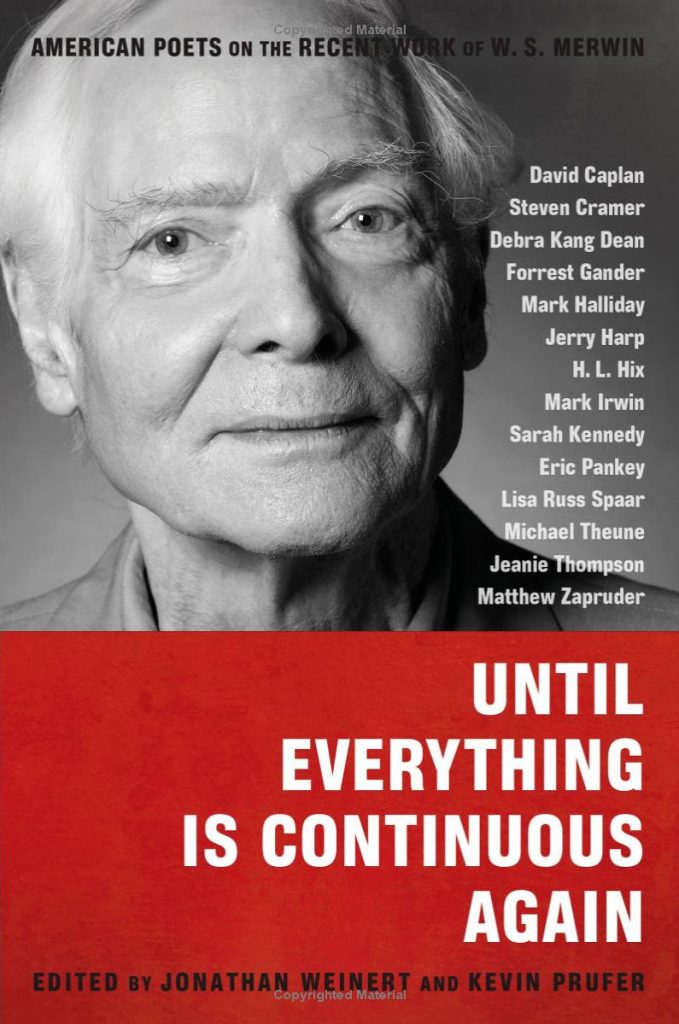American Poets on the Recent Work of W. S. Merwin
Edited by Jonathan Weinert and Kevin Prufer
Finalist for a 2012 Book of the Year Award from ForeWord Magazine
ESSAYS, INTERVIEWS, AND EXCHANGES on W. S. Merwin’s poetry from the publication of The Rain in the Trees in 1988 through his recent Pulitzer Prize-winning collection The Shadow of Sirius.
Featuring contributions by
David Caplan
Steven Cramer
Debra Kang Dean
Forrest Gander
Mark Halliday
Jerry Harp
H. L. Hix
Mark Irwin
Sarah Kennedy
Eric Pankey
Lisa Russ Spaar
Michael Theune
Jeanie Thompson
Matthew Zapruder
The decision to focus on Merwin’s eight most recent collections of poems is not arbitrary, nor is it merely chronological. The critical literature on Merwin . . . identifies The Rain in the Trees as a watershed in Merwin’s work, and the foundation for the very different sort of work that he has produced since. Merwin himself has acknowledged that, with The Rain in the Trees, he had “a sense of coming to the feeling that I’ve done what I wanted to do in that direction, and that the open ground is already somewhere else.”
Establishing that there is a recent work, stylistically distinct from the preceding work, says nothing about the value of that recent work, aesthetically or otherwise. In his elegant and closely argued meta-essay on Merwin’s book-length narrative poem, The Folding Cliffs (1998), H. L. Hix contends that no reading of a poem can be complete without inquiring into what that poem puts at stake. Merwin’s work, always serious and explicit of purpose, seems especially to invite and reward such inquiry. No matter how small their canvas, how intimate their tone, or how simple their language, the poems of W. S. Merwin keep the question of what is at stake continually in the foreground; they are consistently informed (or haunted) by large, public, and philosophically complex concerns. In response, the essays gathered here concern themselves as much with the social, philosophical, political, and ecological dimensions of Merwin’s recent work as they do with the aesthetic, with the poems as a series of artifacts well or ill wrought.
— from the Preface

